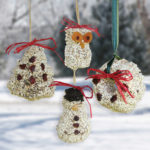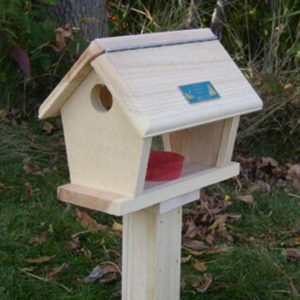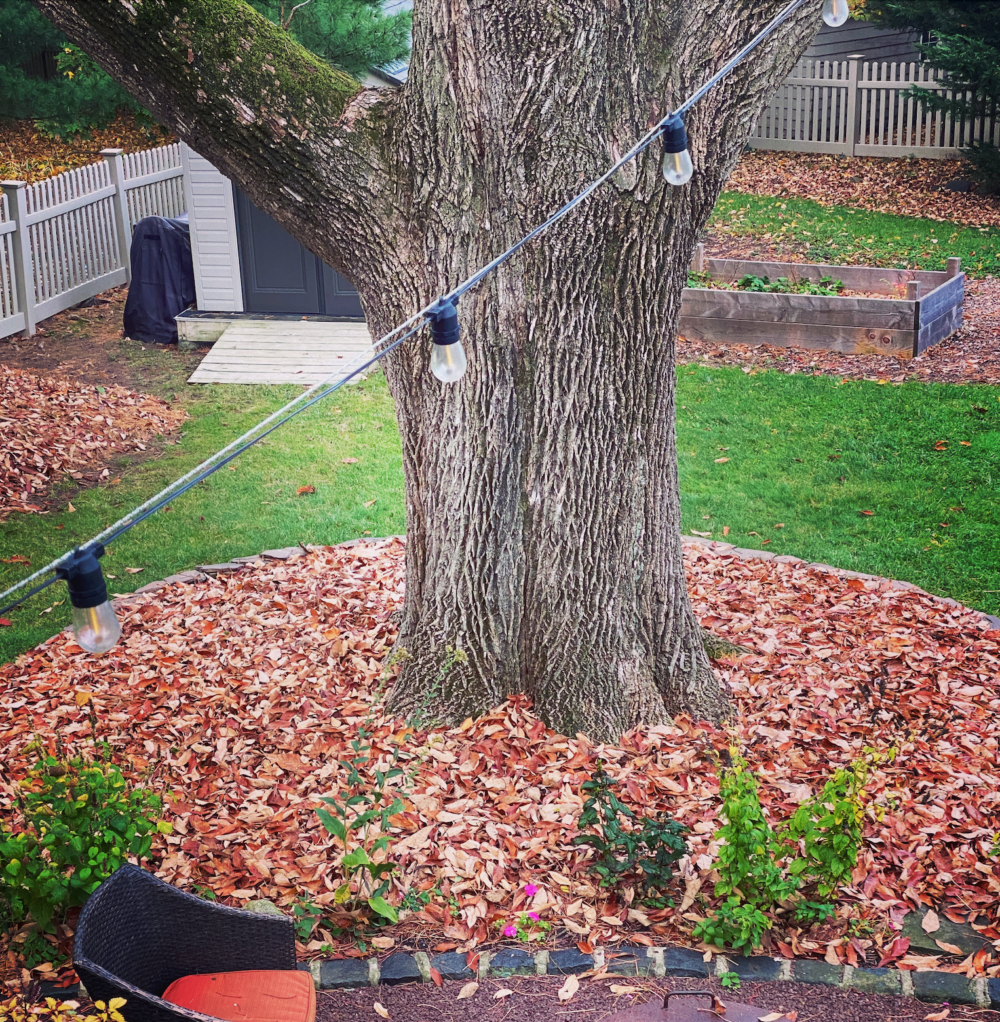We have much more to do and your continued support is needed now more than ever.
Five Ways to Feed Birds

Bird feeding is a great way to attract beautiful and interesting birds to your yard. Our Garden for Wildlife program focuses on native plants as the most important and natural way to feed birds, but you can also put out a few feeders to supplement natural food sources.
Birds don’t become dependent on feeders to survive (which is good news if you go on vacation of forget to fill the feeders) or lose their natural fear of people. So, if you feed birds in moderation and clean your feeders regularly, they will not only attract more birds to your yard, they will also give birds a boost when natural conditions get tough.
Here are five different feeder options that we offer via National Wildlife Catalog. I’ve personally reviewed each of these feeders to make sure the design is high quality. All of them are made in the USA. Even better, the proceeds from the sale of these feeders go directly to support the National Wildlife Federation’s conservation programs.
Tube Feeder
 Tube feeders are simple, low-maintenance feeders. Ours features a UV stabilized plastic seed tube that won’t yellow or crack with age, and metal tops, bases and ports that prevent squirrels from chewing the feeder open. The cap fits snugly, and while it is easy for you to open for filling or cleaning, squirrels or raccoons cannot. There are four feeding ports to allow multiple birds to use it at once. It holds up to one pound of seed. Tube feeders favor the smaller seed-eating birds including juncos, kinglets, chickadees, tufted titmice, flickers, goldfinches, cardinals, wrens, purple finches, downy woodpeckers, towhees, red-breasted nuthatches and grosbeaks. Species such as crows, grackles and jays are generally too large to use tube feeders. Feeder measures 5 1/2″ x 5 1/2″ x 18 3/4″ and can be used year-round.
Tube feeders are simple, low-maintenance feeders. Ours features a UV stabilized plastic seed tube that won’t yellow or crack with age, and metal tops, bases and ports that prevent squirrels from chewing the feeder open. The cap fits snugly, and while it is easy for you to open for filling or cleaning, squirrels or raccoons cannot. There are four feeding ports to allow multiple birds to use it at once. It holds up to one pound of seed. Tube feeders favor the smaller seed-eating birds including juncos, kinglets, chickadees, tufted titmice, flickers, goldfinches, cardinals, wrens, purple finches, downy woodpeckers, towhees, red-breasted nuthatches and grosbeaks. Species such as crows, grackles and jays are generally too large to use tube feeders. Feeder measures 5 1/2″ x 5 1/2″ x 18 3/4″ and can be used year-round.
Hopper Feeder
 Hopper feeders are the classic feeder design, and allow any seed-eating bird to get a meal. They hold a large amount of seed so you have to fill them less often than other style feeders. The overhanging roof keeps rainwater and snow away from the seed, preventing spoilage. This feeder mounts easily and securely on a post or deck railing. Our hopper feeder is handcrafted from eastern white pine and measures 11 3/4″h x 20″w x 14 1/2″d. It can be used year round.
Hopper feeders are the classic feeder design, and allow any seed-eating bird to get a meal. They hold a large amount of seed so you have to fill them less often than other style feeders. The overhanging roof keeps rainwater and snow away from the seed, preventing spoilage. This feeder mounts easily and securely on a post or deck railing. Our hopper feeder is handcrafted from eastern white pine and measures 11 3/4″h x 20″w x 14 1/2″d. It can be used year round.
Hummingbird Feeder
 Not all feeder birds eat seeds. Hummingbirds feed on tiny insects, spiders and flower nectar, so hummingbird feeders are designed to offer sugar water that is similar to the nectar of flowers. Simply dissolve one part white table sugar in four parts water to create your own “nectar”. This feeder holds sixteen ounces of sugar water and has a wide-mouth jar that makes cleaning and adding sugar water easy. All parts are dishwasher safe and removable for easier cleaning. It also features insect guards to keep wasps from crowding out the hummingbirds. The cap and base of this feeder are red like the native wildflowers that attract hummingbirds (no need to add red dye to the nectar, which is not necessary to attract hummingbirds and could potentially harm them). Use whenever hummingbirds are present in your area.
Not all feeder birds eat seeds. Hummingbirds feed on tiny insects, spiders and flower nectar, so hummingbird feeders are designed to offer sugar water that is similar to the nectar of flowers. Simply dissolve one part white table sugar in four parts water to create your own “nectar”. This feeder holds sixteen ounces of sugar water and has a wide-mouth jar that makes cleaning and adding sugar water easy. All parts are dishwasher safe and removable for easier cleaning. It also features insect guards to keep wasps from crowding out the hummingbirds. The cap and base of this feeder are red like the native wildflowers that attract hummingbirds (no need to add red dye to the nectar, which is not necessary to attract hummingbirds and could potentially harm them). Use whenever hummingbirds are present in your area.
Bird Seed Ornaments
 Delightful wherever you hang them, these seed ornaments offer a treat to the birds as well as a bit of decoration to your yard. Ours are made of safflower seeds, cranberries and raisins, and come in a set of four shapes: a Christmas tree, an owl, a snowman and a wreath. Each ornament is approximately three inches high. These are great to put out during the holiday season.
Delightful wherever you hang them, these seed ornaments offer a treat to the birds as well as a bit of decoration to your yard. Ours are made of safflower seeds, cranberries and raisins, and come in a set of four shapes: a Christmas tree, an owl, a snowman and a wreath. Each ornament is approximately three inches high. These are great to put out during the holiday season.
Bluebird Feeder
 Bluebirds are one of the most popular and beloved species, but they do not generally eat seed or visit feeders. Instead they forage for berries and insects. So our hopper-style bluebird feeder isn’t designed to hold seed. Instead, it’s made specifically to offer dried mealworms for bluebirds and other insect-eating birds that won’t visit a seed feeder. Several bluebirds can feed simultaneously within this feeder. Included is a cup to hold mealworms. This feeder is easily mounted to a post or deck railing and 9″h x 11 1/2″w x 7 1/2″d and can be used year-round. In the spring and summer, bluebird parents often bring their fledglings to feeders for an easy meal. We also offer dried mealworms to fill this feeder.
Bluebirds are one of the most popular and beloved species, but they do not generally eat seed or visit feeders. Instead they forage for berries and insects. So our hopper-style bluebird feeder isn’t designed to hold seed. Instead, it’s made specifically to offer dried mealworms for bluebirds and other insect-eating birds that won’t visit a seed feeder. Several bluebirds can feed simultaneously within this feeder. Included is a cup to hold mealworms. This feeder is easily mounted to a post or deck railing and 9″h x 11 1/2″w x 7 1/2″d and can be used year-round. In the spring and summer, bluebird parents often bring their fledglings to feeders for an easy meal. We also offer dried mealworms to fill this feeder.
Every wildlife garden should include: food, water, cover, places to raise young and be managed with sustainable practices.
Related posts:
4 Ways to Provide Water for Birds
4 Ways to Provide Cover for Birds





















